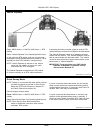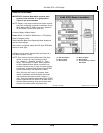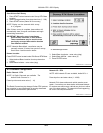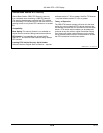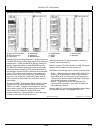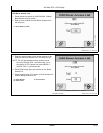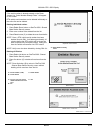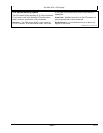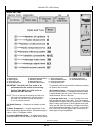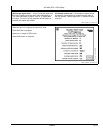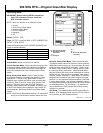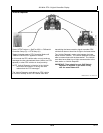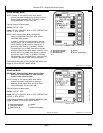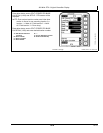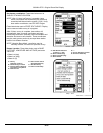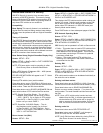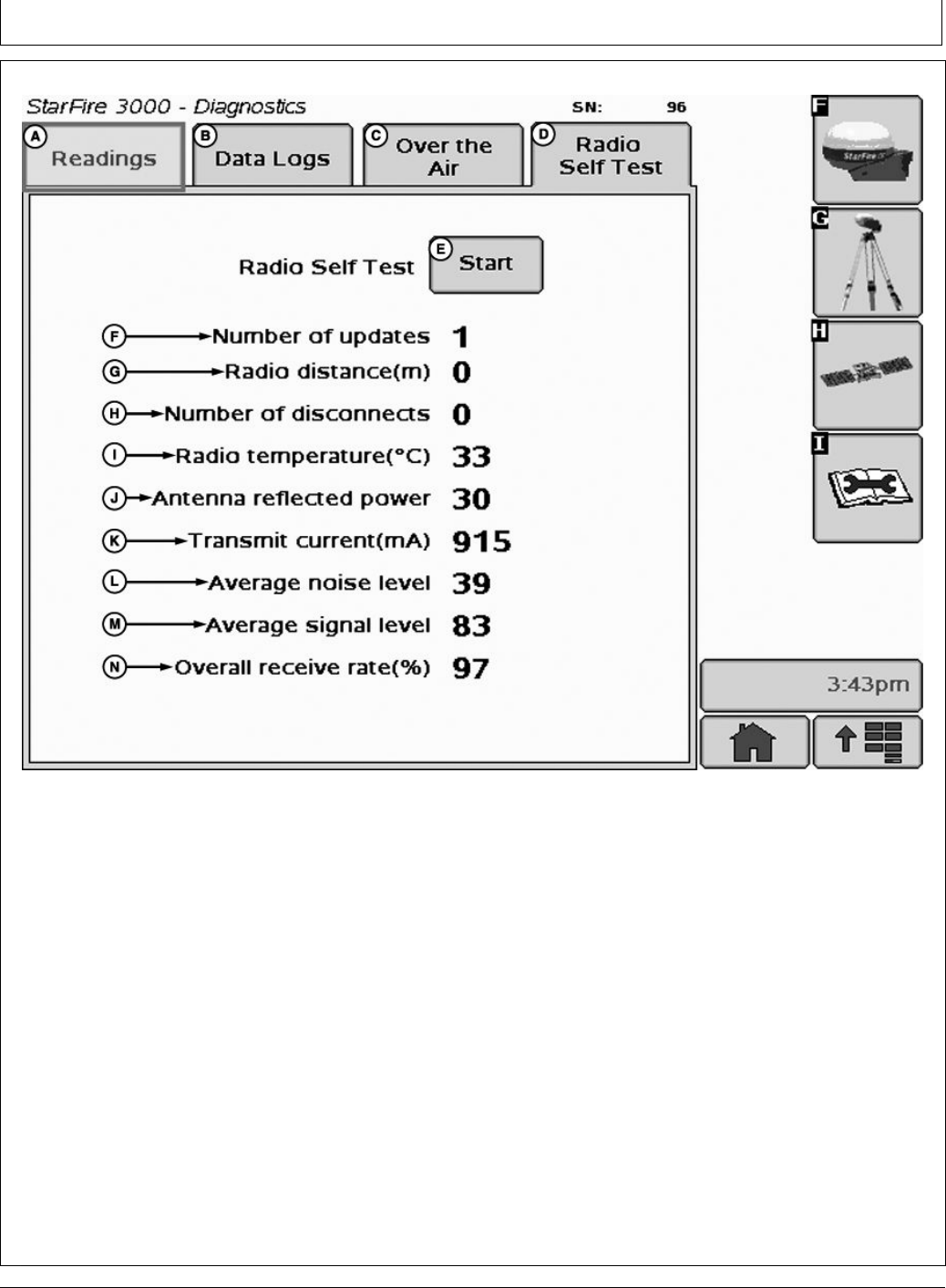
900 MHz RTK—GS2 Display
Continued onnext page DK01672,000020A -19-01DEC11-1/3
Radio Self Test
PC12048 —UN—11JUN09
A—Readings tab
B—Data Logs tab
C—Over the Air tab
D—Radio Self Test tab
E—Radio Self Test Start button
F—Number of Updates
G—Radio Distance (m)
H—Number of Disconnects
I— Radio Temperature
J— Antenna Reected Power
K—Transmit Current (mA)
L—Average Noise Level
M—Average Signal Level
N—Overall Receive Rate (%)
IMPORTANT: The Radio Self Test needs to be
performed while the vehicle is not moving.
StarFire 3000 MUST be in RTK mode to
perform the radio self test.
NOTE: This is an average and putting the radio into
test mode will decrease this average until it is
put back into operational mode and allowed
to run for several minutes.
(G) Radio Distance — Distance from master to slave
radio.
(I) Radio Temperature — Internal temperature of the
radio, measured in degrees Celsius. Acceptable range of
values: -40 to +75 degrees Celsius.
(J) Antenna Reected Power — A voltage ratio used to
indicate problems with the antenna. Higher values (above
75) generally indicate issues with the antenna, possibly
an antenna that is broken.
(K) Transmit current — Amount of current consumed
during radio transmission. Acceptable operating range
is approximately 500 mA or less. Value can range any
where between 400 and 1000 mA.
(L) Average Noise level — Level of background noise
and interference seen at this radio. This is an average
reading taken at regular intervals by the radio. Putting the
radio in setup mode (which is what happens during the
radio test) will affect this reading. Average noise levels
would be somewhere between 15 and 30. Levels lower
than 15 are ok, but levels higher than 30 may start to
show signs of signal degradation.
25-13
121511
PN=38



